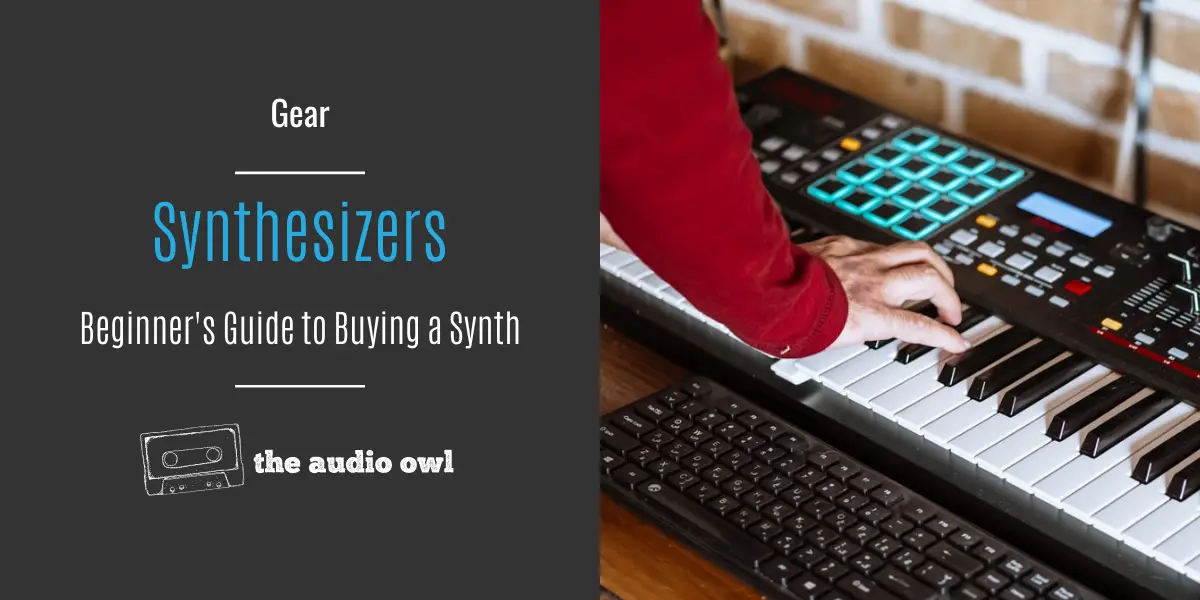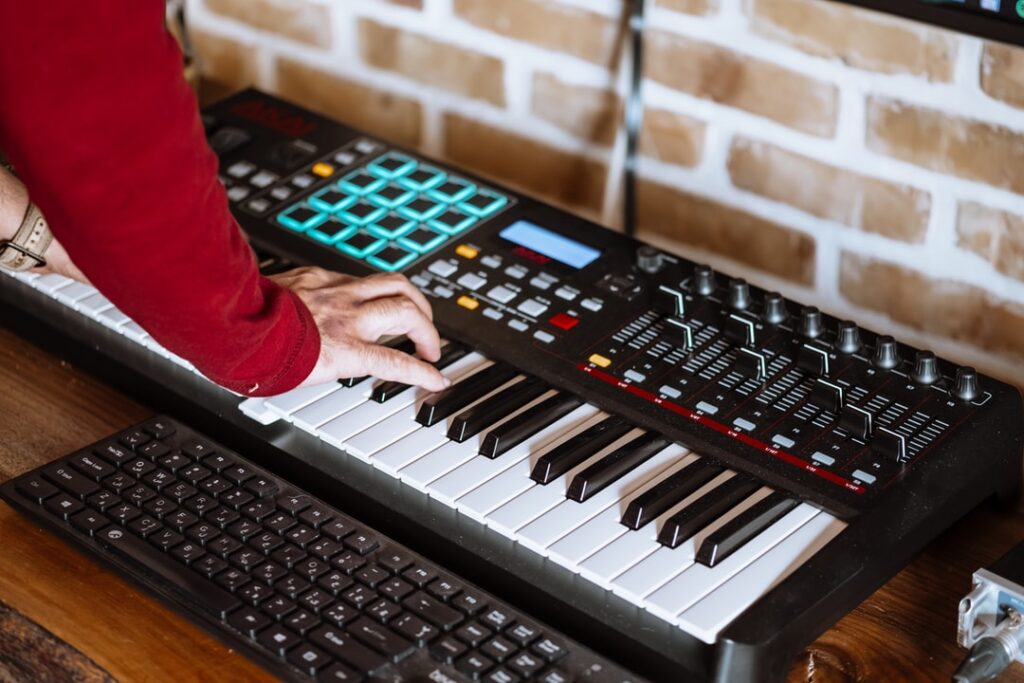The first electronic sound synthesizer was invented in 1955 at the Radio Corporation of America. Soon after, Moog released their commercial synth during the sixties and transformed popular music. But do you know the many options available today?
Choosing a synth can be tricky, especially if you don’t know the sound you want. Read on as we present our essential synthesizer guide and help you decide which one to buy.
This site contains affiliate links to products. The Audio Owl may receive a commission for purchases made through these links.
What Is a Synthesizer?
Most people can easily identify the hums and beeps of a synth, but few can explain what they are. A synth is classified as a musical instrument that uses electricity and circuit boards to create a pitched sound. Operations are done by playing a keyboard interface or through the manipulation of buttons, switches, and dials.
The Types of Synthesizers
Synthesizers can be grouped into three broad operating methods. These are FM, subtractive, and wavetable.
FM
FM stands for frequency modulation. It allows you to create complex timbres by modulating one sound frequency with another, creating a hybrid texture. The difference between FM synths and most of the other sound-making techniques is that they are generally subtractive, while this does not take away from a sound to manipulate it.
It is a complex term to understand when you are discussing synthesizers for beginners. It is much easier to understand once you have played with it and experimented. Should you be in any doubt as to its influence, the eighties would not have sounded the same without it.
Subtractive
Subtractive synthesis is one of the main types of synth. It works on the principle of taking a sound and subtracting frequencies to get the timbre you desire. Oscillators, filters, and LFOs are all tools that help you do this.
Wavetable
Wavetable is another form of synthesis. They work differently from other synths as they take a piece of the recorded sound as a basic source, then manipulate this using an oscillator. Functioning like a sampler themselves, they have more options for manipulating the sound after and tend to have a more natural tone.
Synthesizer Guide
Once you know the type of basic functions, you will find plenty of other features on synths. They are used to manipulate the sound and are listed below.
Oscillators
Oscillators take a waveform and turn it into a repeating signal. A waveform will contain both its dynamics and harmonic frequencies. The type of oscillator dictates the type of waveform from which you can then create your given synth sound.
Envelopes
An envelope is an automatic movement set into a synth that controls the value of a certain parameter. By adding them to a wave, they can change how it sounds, cutting off or amplifying certain elements. Generally, they are broken down into attack, decay, sustain and release.
The attack is the time a sound takes to reach its maximum level. If the envelope is turned up here when the key is pressed, the sound will hit very quickly. Lowering and it will have a slower, longer rise.
Decay is the period after this, and measures how long it takes to tail off and reach the sustain. A short decay may be almost unnoticeable.
Sustain is the level at which the note holds. A longer sustain will drag the sound on for a longer period. The release is the time it takes for this to end and the sound to vanish entirely.
LFOs
Low-frequency oscillation (LFO) deals with extremely low pitches, oscillating slower and existing more as a way to manipulate sound than a primary source. They have a few unique characteristics compared to standard oscillators.
Firstly, they are almost always lower in frequency. They also exist for modulation and are very rarely heard.
What Kind of Synthesizer to Buy
When you want to choose, it helps to go back to what influenced you and made you want a beginner’s synthesizer. If it was a certain sound or artist, you can research and find out what type of synth they used. There are a few more pointers below to assist.
New or Second Hand?
The second-hand synth market can be extremely expensive, especially when it comes to older, respected models. However, you may be able to get yourself a bargain if you shop around. Keep in mind that these synths may be more prone to damage and need repair due to age.
When you get a new synth, it will have been checked for quality in the factory. You will also get a refund policy and a warranty should anything go wrong.
There are two main connections a synth can have, and you may need both or just one of them. The first is the audio connections. If you are looking for analog output to an amplifier or an audio interface, then you will need to ensure it has the right audio connections.
Connectivity
Some people will choose to pick a synth that has MIDI connectivity. This is a musical instrument digital interface and lets you send information on notes and sound in digital form.
Monophonic or Polyphonic
A monophonic synthesizer will only allow you to press one note at a time. A polyphonic lets you play multiples, so you can create chords. As monophonic synths have less complicated circuitry, they tend to be cheaper but for certain sounds and styles, they may come out on top.
Making a Purchase
There is a huge range of synthesizers on the market, both new and vintage. Once you know what features and style you want, set a budget. From here, you can research the models available to you.
For all your electronic music information, Audio Owl should be your first stop. From synths to samples, we can help with everything you need to make music. Click here to see our range of free drum packs to use in your next project.
Author: Mike P
Hi! My name is Mike! I’ve been an apartment producer/musician for 10+ years. I’ve played in punk bands, released EDM tunes on Beatport and iTunes, and have a semi-successful stock music portfolio. Read more…



